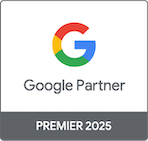
Ad rank monitoring in 2025: Proven strategies to improve visibility and lower CPC
Abisola Tanzako | Jul 30, 2025

Table of Contents
- Ad rank explained: How Google determines your ad position
- Why ad rank monitoring matters
- Top tools to monitor and optimize your ad rank in 2025
- Statistics that highlight the ad rank’s impact in 2025
- Best practices for improving ad rank monitoring
- The future of ad rank monitoring
- Elevating your digital strategy with ad rank monitoring
- FAQs
According to Google, improving ad rank by just one position can reduce cost-per-click by up to 15% (Google Ads, 2024).
Successful digital marketing in our evolving market demands complete insight into your advertisements’ search engine results page (SERP) performance.
Ad rank monitoring represents a fundamental strategic practice that businesses must perform to achieve maximum visibility, clicks, and conversions across SERPs.
This guide offers insights into Ad Rank, explaining its importance in performance tracking. It also provides effective Ad rank monitoring techniques and updated statistics for the year 2025.
Ad rank explained: How Google determines your ad position
Search engines like Google use Ad Rank to determine the placement of your ad on a SERP based on an assigned value.
The calculation of Ad Rank depends on your bid amount, ad quality, and quality score measurements, as well as the user’s search context and expected results from extensions and different formats.
When your ad rank increases, you typically have a better advertising position at the top of the page. The Google algorithm undergoes regular modification, with 36 alterations from September 2018 to September 2023 and 13 major updates.
Ad rank evolves as a performance metric that people need to monitor continuously for optimal placement in Google Ads.
Why ad rank monitoring matters
Your campaign’s success strictly depends on the proper management of Ad Rank. Here is why it is a game-changer:
- Visibility drives clicks: Users are more likely to notice ads displayed in positions directly affected by their ranking. Google mobile searchers review Google’s primary organic result to the extent of 27.7% clicks, but demonstrate a rapid decrease to 2.7% clicks for results located beyond the first page, as compiled in the 2025 SEO statistics report from MonsterInsights.
- Cost efficiency: Proper oversight of Ad Rank helps reduce the cost-per-click (CPC). Google positions strong ads at more favorable placements, yet at reduced expenditure prices. Monitoring Ad Rank enables cost reduction for paid search, even though organic search remains the primary traffic source, with 53%, while paid search represents only 15% of total traffic.
- Competitive edge: The fight for premier positions on Google search results has intensified since 95% of users focus on the first search page. Tracking your ad rank enables you to manage ad bids effectively, refine the text, and update your landing page to surpass competitors.
- Adapting to algorithm changes: Google’s continuous algorithm changes make Ad Rank a dynamic element. In 2025, mobile search activity is expected to account for 58% of total Google search traffic, making optimizing your ads an essential practice.
Top tools to monitor and optimize your ad rank in 2025
Here’s a solid list of top tools to monitor and optimize your ad rank in 2025:
1. Google Ads (Native Platform Tools): The most direct way to monitor your Ad Rank using the Search Terms Report, Auction Insights, and Quality Score breakdowns (Expected CTR, Ad Relevance, Landing Page Experience).
- Best for: Real-time performance tracking, adjusting bids, and enhancing ad relevance.
2. SEMrush: A comprehensive Advertising Toolkit that includes Ad Rank tracking, competitor ad copy analysis, and keyword-level CPC insights.
- Best for: Competitive analysis, discovering keyword gaps, optimizing budget allocation.
3. Ahrefs: Primarily an SEO tool, it also provides data on paid keywords, ad copy, and landing page effectiveness of your competitors.
- Best for: Reverse-engineering top-performing competitor ads and finding untapped paid opportunities.
4. SpyFu Tracks competitors’ organic and paid keywords, estimates ad rank, and provides historical ad data for years.
- Best for: Learning what’s working for your rivals so you can outbid or outsmart them.
5. Optmyzr: AI-powered tool that provides optimization suggestions, manages bidding strategies, and improves Quality Score to impact Ad Rank directly.
- Best suited for: PPC managers looking to automate account improvements and save time.
6. WordStream Advisor: This offers a user-friendly dashboard for monitoring Google and Microsoft Ads campaigns, with tips for improving Quality Score and Ad Rank.
- Best for: Small businesses and marketers without a dedicated PPC team.
7. Adalysis: Specializes in automating A/B testing, managing alerts, and providing actionable suggestions to boost Ad Rank by improving CTR and ad relevance.
- Best for: Agencies and marketers handling multiple accounts.
8. PPC Samurai: Advanced automation and workflow tools to monitor ad performance, detect drop-offs in ad rank, and implement changes quickly.
- Best for: High-volume advertisers and PPC consultants.
9. Skai (formerly Kenshoo): Uses AI-driven data modeling to predict Ad Rank shifts, performance trends, and budget allocation impact.
- Best suited for: Enterprise-level campaigns that require granular control and forecasting.
10. Google Looker Studio (with Google Ads Integration): Turn Ad Rank and Quality Score data into dashboards and visual reports for easier tracking over time.
- Best for: Agencies and teams who need to present performance to clients or execs.
Statistics that highlight the ad rank’s impact in 2025
The following data explains why Ad Rank oversight is necessary for every business owner.
- Mobile dominance: Mobile devices now account for 60% of all web traffic, so ads specifically made for mobile devices achieve better engagement results. A mobile advertisement that occupies an inferior position will fail to capture this substantial viewer base.
- First-page importance: Technical problems affecting landing page quality are present in 95.2% of websites, along with 3XX redirects, which reduce Ad Rank scores.
- User behavior: Cell phone users conducting local searches are likely to visit the listed business quickly, as 28% of searches result in immediate purchases.
- Content quality: Pages containing 1,400 through 1,500 words receive top organic rankings, directly impacting the achievement of optimal paid ad landing page results.
- Speed matters: Page load delays of just two seconds result in a 103% surge in visitors who leave without viewing other content on the page, thereby impacting both the landing page experience and ad rank.
Best practices for improving ad rank monitoring
The following strategic approach will help improve your Ad Rank position by 2025:
- Enhance ad relevance: Adjust your ad text to match the audience’s search intents better. Double-check that your advertisement matches the headline by featuring your best-selling shoe products or ranking as the top shoe option.
- Optimize landing pages: The success of your online advertising strategy depends heavily on a fast website that can be easily accessed on mobile devices. High-quality images should also be included, as 50% of consumers value them when making a purchase.
- Leverage ad extensions: The expected impact of your ad affects Ad Rank, and you can boost it by using site links, callouts, and structured snippets. Companies that display more than 100 images through their Google My Business profiles generate 1,065% more website traffic through these enhanced advertisement formats.
- Bid smartly: Higher bids will increase ad rank, but quality enhancements will help avoid unnecessary spending. Search ad spending in the United States reached $132 billion in 2024, indicating how brands prioritize top-priority positions with financial investments.
- Test and iterate: Data testing of ad messages, call-to-action elements, and landing pages provides 16.7% of SEO professionals with their most effective practice.
The future of ad rank monitoring
Ad Rank monitoring is expected to continue evolving as search technology and AI systems advance throughout 2025.
Moving forward, Google’s search engine results pages, which AI now controls, may influence ad position rankings because they present content through conversational interfaces.
At the same time, 70% of voice query outcomes derive from HTTPS pages, indicating HTTPS will gain more importance in search rankings.
By the end of 2025, smartphone users are expected to account for 72.6% of the internet population; therefore, mobile optimization requirements will remain strong.
Elevating your digital strategy with ad rank monitoring
Organizational success in digital marketing relies heavily on strategic monitoring of ad rank. Ad rank monitoring offers improved visibility at lower costs, enabling businesses to stay ahead of their competitors in a competitive digital market.
The effectiveness of your ad campaign depends heavily on active monitoring, as all its core components respond positively to systematic assessment.
In 2025, you should make Ad Rank an essential component of your marketing approach because this will lead to a higher return on investment (ROI).
FAQs
Q.1 What is Ad Rank, and how is it determined?
Ad Rank is a numerical value used by search engines like Google to determine an ad’s placement on SERPs. It is determined based on bid amount, quality score (ad relevance, predicted CTR, landing page quality), search context, and ad extension effect.
Q. 2 Why is my ad rank always changing?
Ad rank changes due to updates in Google’s algorithm, competitor activity, and variations in your ad quality or price. In 2023 alone, Google released 13 center updates that affected positioning.
Q. 3 Why can I not boost my ad rank without increasing my budget?
Optimizing ad relevance, landing page optimizations, and extensions can increase your quality score. Relevant, high-quality ads tend to score higher at a lower cost.





